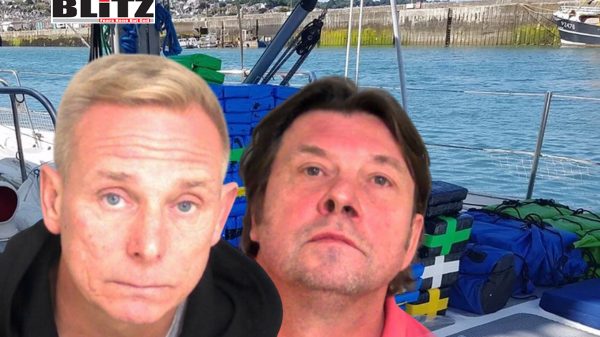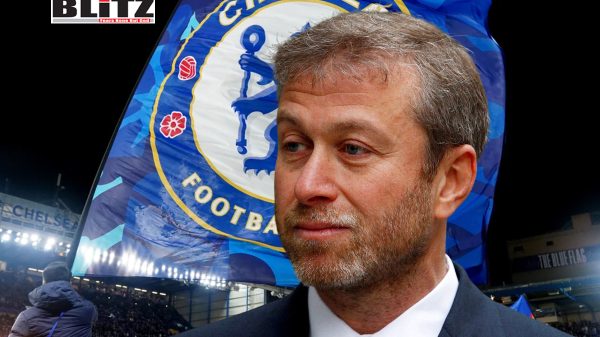UK jails ringleaders behind cocaine yacht and cannabis smuggling conspiracy
- Update Time : Sunday, September 14, 2025

The United Kingdom has dealt a decisive blow to an ambitious transnational drug trafficking operation, jailing two suspected ringleaders who spent years orchestrating schemes to flood the country with cocaine and cannabis. The convictions come at a time when Europe faces a historic surge in narcotics smuggling, with drug cartels exploiting maritime routes, container shipments, and the continent’s porous supply chains to feed a multibillion-euro trade.
According to the UK’s National Crime Agency (NCA), the ringleaders-Lee McClenaghan, 57, and Lea Talbot, 55-were the brains behind an elaborate plan to sail 600 kilograms of cocaine across the Atlantic. Their method was as bold as it was deceptive: they intended to disguise the shipment as part of a legitimate transatlantic sailing race in 2020. By embedding themselves in an event tied to sport and endurance, they sought to evade scrutiny from maritime authorities.
But when the race was canceled due to the COVID-19 pandemic, the group shifted gears. Instead of abandoning their ambitions, they pursued other trafficking methods, hiding cocaine within container loads of fruit and vegetables and orchestrating large-scale cannabis imports from Morocco.
The operation unraveled in May 2022, when investigators seized 408 kilograms of cannabis concealed inside a lathe machine, exposing a broader conspiracy that had been years in the making. The seizure, officials say, confirmed the group’s ability to adapt and exploit global supply chains.
The UK courts handed down severe punishments. McClenaghan was sentenced to 30 years in prison, while Talbot received 23 years. Other members of the network, whose roles ranged from logistics to distribution, were given sentences between six and 22 years after pleading guilty.
Detective Inspector Richard Smith of the Organized Crime Partnership underscored the significance of the bust. “Had the cocaine plan succeeded, it would have been incredibly lucrative,” he said. “Their failure deprived organized criminals of the profits this large amount of cocaine would have generated, and prevented communities suffering the violence and exploitation associated with it.”
The scale of the sentencing reflects the UK’s growing determination to combat organized crime, particularly in the context of a drug market that is increasingly globalized and technologically sophisticated.
This case is not an isolated one-it fits into a broader, troubling picture. The European Union Drugs Agency (EUDA) estimates that the EU drug market carries a minimum retail value of €31 billion ($36.38 billion). Cocaine alone accounts for a major share of that figure, with availability remaining high despite repeated seizures.
“High availability across major drug types, stable retail prices alongside high purity and a widening range of consumer products all point to strong demand being met by increasingly efficient drug supply chains,” explained Alexander Söderholm, Scientific Analyst for Drug Markets and Crime at the EUDA.
Europe, he added, “occupies a central position in global trafficking, serving both as a key market and a hub of large-scale production.” With Latin American cartels increasingly using European ports as gateways and synthetic drug producers multiplying within the continent, the scale of the problem is accelerating.
The EUDA has warned that Europe’s major ports have become chokepoints for narcotics trafficking, with seizures reflecting both the sheer volume of shipments and the vulnerabilities within port security. Between January 2019 and June 2024, authorities seized more than 1,826 tonnes of illicit drugs either within or en route to EU ports.
Containerized shipping, once celebrated for its efficiency and global reach, has become a tool for traffickers. Hidden compartments in fruit crates, industrial equipment, or seemingly innocuous consumer goods have allowed criminal groups to move massive shipments with relative ease.
“This surge reflects not only rising volumes but also growing vulnerabilities,” the EUDA warned in June 2025. It described the trend as evidence of a “worrying scale of criminal activity” embedded within global supply chains.
Drug trafficking is not just an economic issue-it is a driver of violence, corruption, and human suffering. The profits generated from cocaine and cannabis shipments often bankroll violent turf wars, money laundering schemes, and the corruption of officials at multiple levels of governance.
In the UK, authorities point to the broader impact on communities, where drug distribution networks fuel addiction, exploitation, and gang-related violence. “These interlinked markets-and the violence and corruption they generate-reinforce the need for system-level measures across the illicit drug supply chain,” Söderholm emphasized.
What the McClenaghan-Talbot case illustrates is the sophistication of modern trafficking networks. Criminal groups are increasingly resilient, able to pivot strategies in response to external disruptions like the pandemic. When one route closes, another opens-whether through container shipments, synthetic drug production, or maritime smuggling.
The pandemic, instead of crippling the global drug trade, appears to have accelerated its diversification. With border closures and event cancellations, traffickers sought new methods, embedding themselves further into legitimate supply chains.
For European law enforcement, this adaptability presents a formidable challenge. Traditional interdiction measures-raids, seizures, and arrests-are necessary but insufficient without broader international cooperation and systemic reform of port security, financial oversight, and anti-corruption measures.
While the long prison sentences in the UK mark a victory for law enforcement, they are unlikely to stem the overall flow of narcotics into Europe. The sheer profitability of the trade ensures that others will step in to fill the void left by McClenaghan and Talbot.
Still, the case serves as a warning to criminal groups: the risks are high, and international collaboration is improving. The NCA’s success highlights the importance of intelligence-sharing between agencies and countries, as well as the growing ability of law enforcement to infiltrate and dismantle sophisticated networks.
But as Europe’s €31 billion drug market continues to expand, the struggle against traffickers is a marathon, not a sprint. The arrests may have prevented one shipment of cocaine from reaching UK shores, but the systemic vulnerabilities that allowed the plot to take shape remain.
Until those weaknesses are addressed, the drug trade will continue to thrive-fueling violence abroad, corruption at the ports, and suffering on Europe’s streets.










